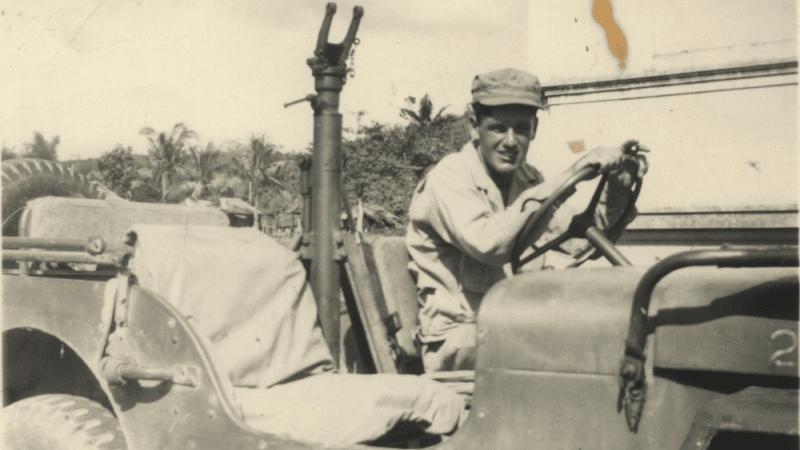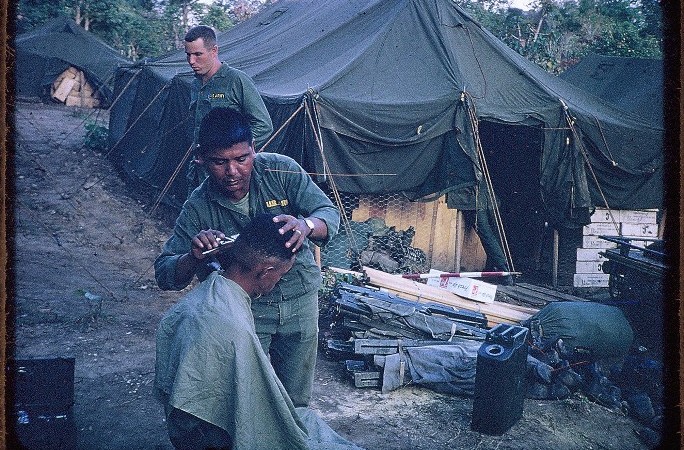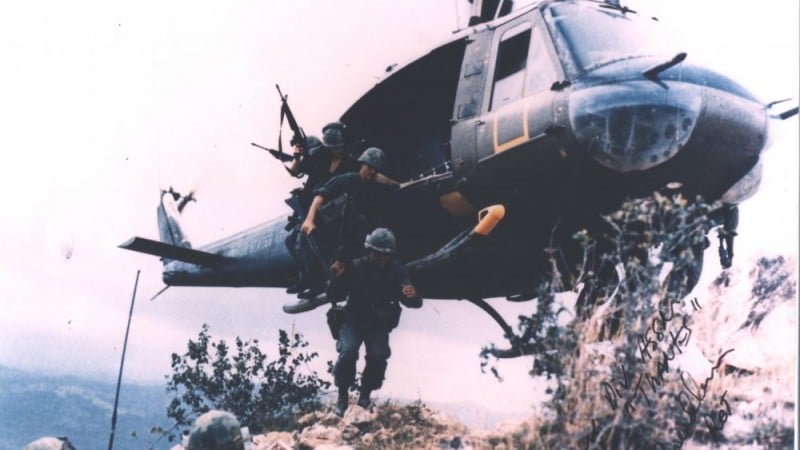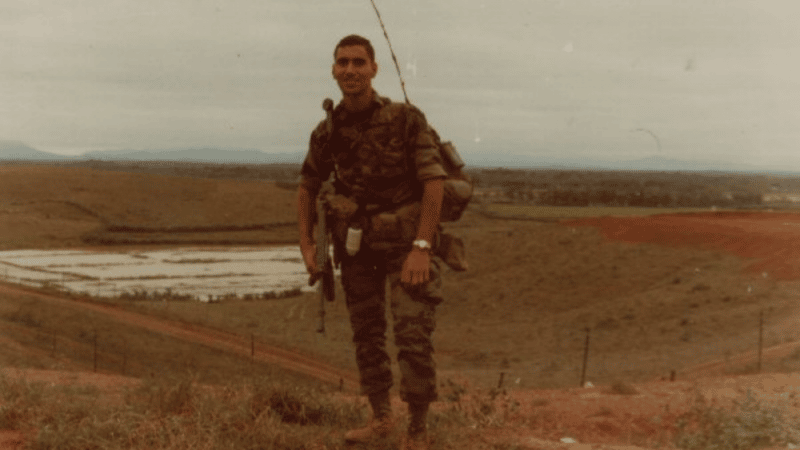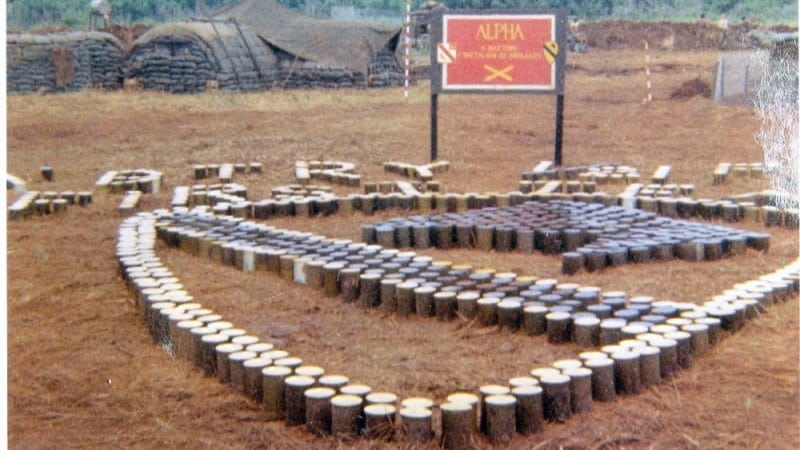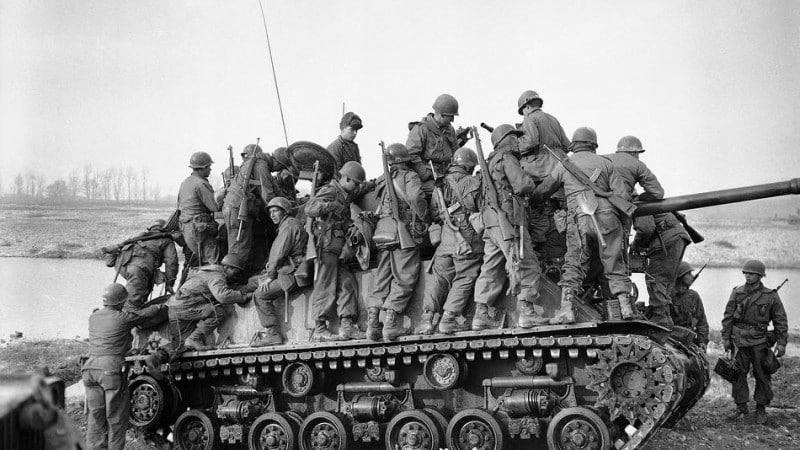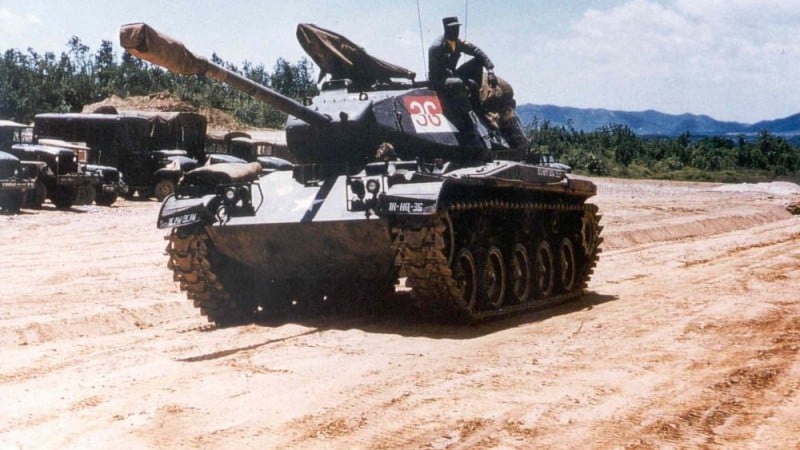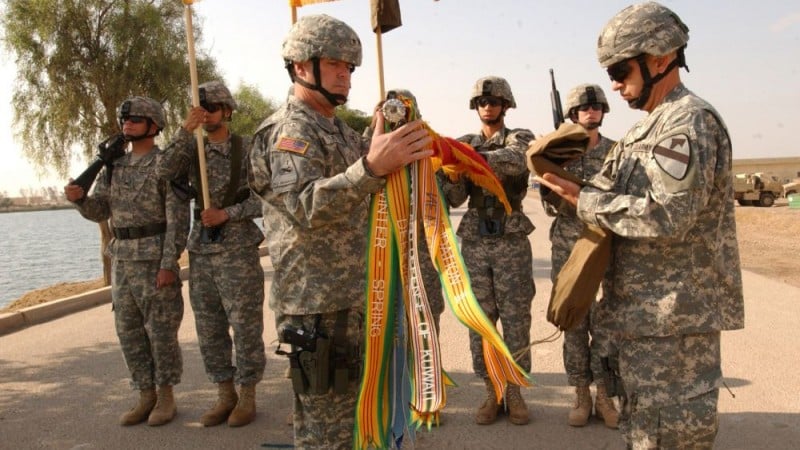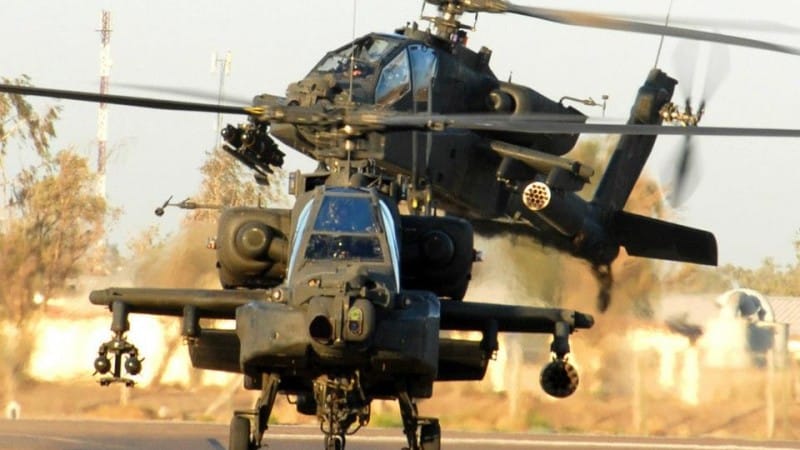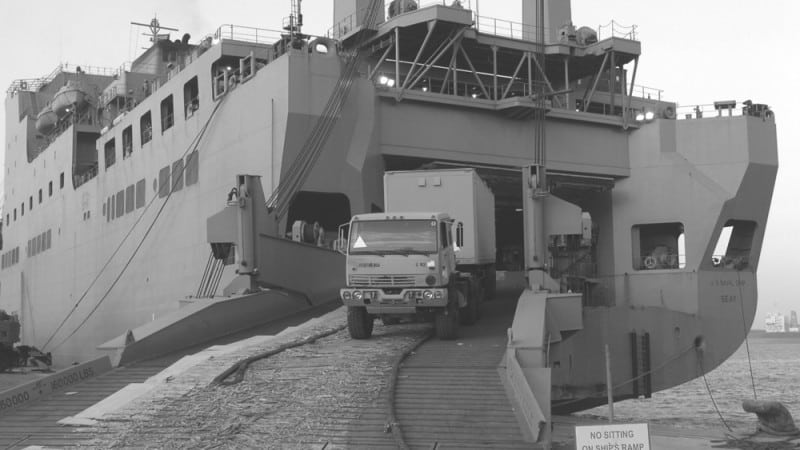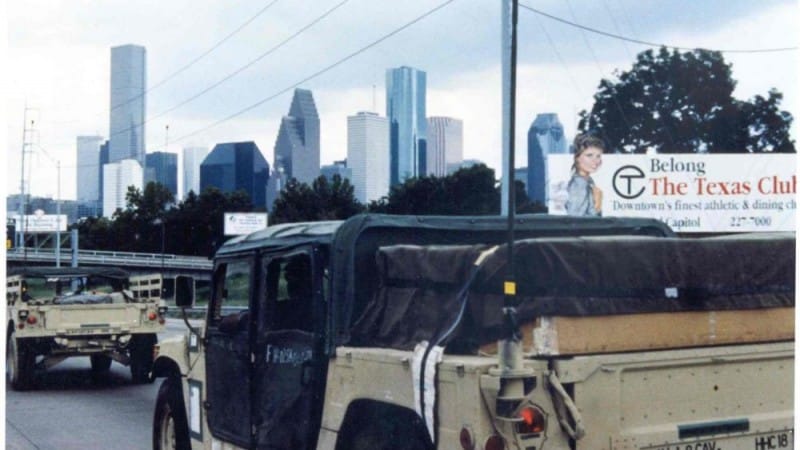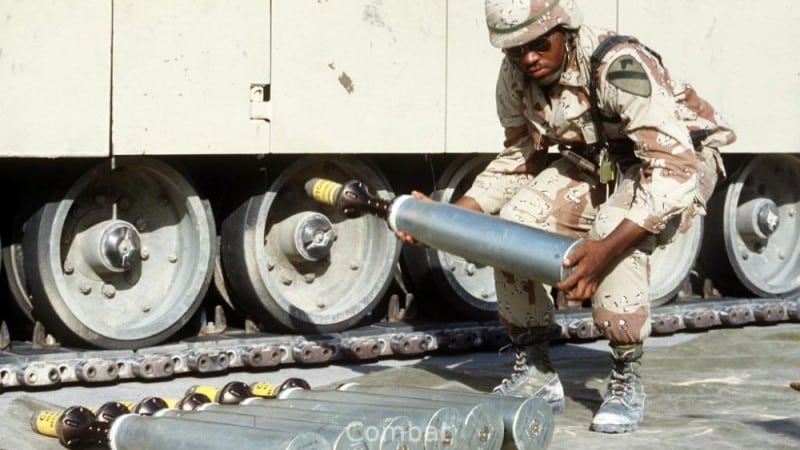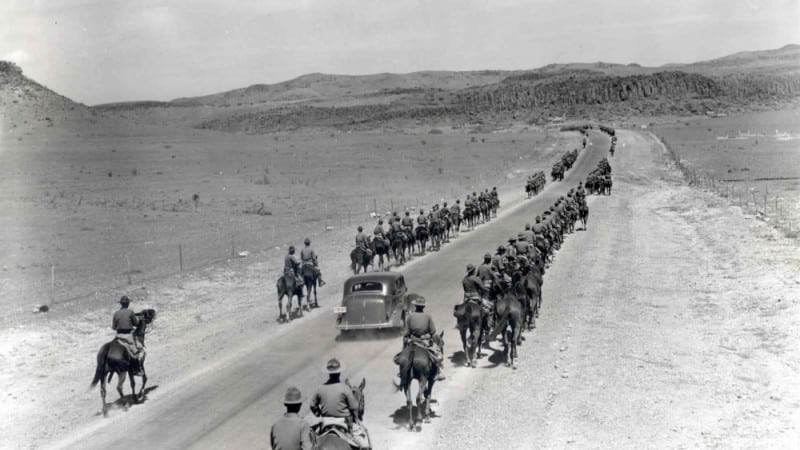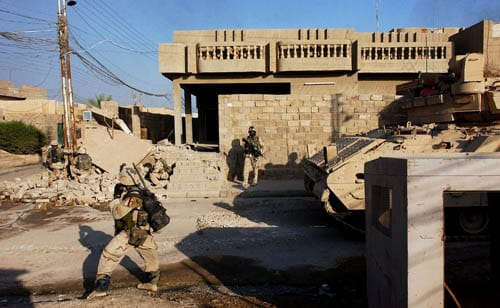39th Infantry Brigade
Arkansas Army National Guard
“The Arkansas Brigade”
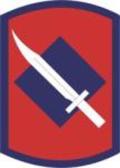
The origins of the 39th Infantry Brigade begin when its predecessor unit, the 39th Infantry Division came into being on 18 July 1917, when the number “39” was allocated to National Guardsmen from Louisiana, Mississippi and Alabama. On 3 August 1917 the unit organized for training at Camp Beauregard, LA and was designated as the 39th Division. Its primary mission was to assist in the training of other National Guard units as well as regular state duties. On 23 January 1919, at the end of World War I, it was demobilized at Camp Beauregard.
World War II
When World War II began, Camp Beauregard became very active with the creation of the 3rd Armored Division. Many of the troops of the 39th volunteered for service with the new Division and deployed with the 3rd Armored to Europe in 1944. The 39th Division itself was never activated for overseas service in World War II, instead its Soldiers were assigned to other overseas units.
Following several reorganizations and participation in various capacities during World War II, the unit was reconstituted on 27 May 1946 as Headquarters, 39th Division. On 30 September the 39th Divisional Headquarters was reconstituted, organized, and federally recognized for the state of Louisiana, and 26 August 1947 for Arkansas.
On August 26, 1947, the Division Headquarters was moved from Louisiana to Little Rock Arkansas and the Louisiana units were separated to form their own command. On 24 September 1957, the 39th was called into Federal service to respond to the riots and protests during the Little Rock Integration Crisis and was released from active Federal service on 25 October 1957. With that exception, the 39th Division served the State of Arkansas during the ’50s and ’60s.
Vietnam Era
On 1 December 1967, the 39th Infantry Brigade (Separate), known as the “Arkansas Brigade”, was formed upon reorganization of the Army National Guard. The Brigade participated in extra training from May of 1968 to September 1969 to increase their readiness. In 1969, the Department of the Army designated the 39th Infantry Brigade as “The Arkansas Brigade”.
Since its organization, the 39th Infantry Brigade has undergone several minor reorganizations to meet National Defense requirements. In 1973, the Brigade was affiliated with the 101st Airborne Division (Air-Assault) and conducted regular training exercises with the 101st and with a greater emphasis on combat readiness, became an Air Assault Brigade.
On 12 April 1994, the 39th was again reorganized as the 39th Separate Infantry Brigade (Enhanced). It was one of 15 National Guard Brigades to be so organized. In 1996, the brigade completed a most arduous training exercise at the Joint Readiness Training Center (JRTC) at Fort Polk, Louisiana.
The 39th Infantry Brigade (Separate), headquartered at Ricks Armory in Little Rock, Arkansas, participated in several major training exercises during 1998. Lanes training emphasized critical individual, leader, and collective tasks throughout the year. The “multi-echelon” approach included day and night exercises for all infantry assault collective tasks prior to annual training. Battle Staff Training was integrated into annual training at all levels through the development of a Brigade operations order, which allowed subordinate units to do the same.
During 1998 Annual Training (AT) was held at the Ft. Chaffee Maneuver Training Center, and Camp Robinson Maneuver Training Area. During annual training, the Brigade was evaluated under Joint Readiness Training Center conditions by the 120th Infantry Brigade from Ft. Sam Houston, TX. Opposing forces support was provided by the 34th Infantry Division from the Iowa National Guard. The Missouri and Kentucky National Guard provided additional AT support.
During 1998 TOW missile companies qualified at Camp Robinson, while the 1/206th Field Artillery qualified for battery certification at Ft. Chaffee. Intelligence gathering from scouting and screen line operations was provided by “E” Troop, 151st Cavalry, while the 239th Military Intelligence Company developed counter-intelligence plans to provide the commander with an overall Brigade battlefield assessment. The 239th Engineer Company provided mobility support to the infantry mission by breaching obstacles, and also utilized engineer equipment to build survivability positions and to make several site improvements to the Fort Chaffee Maneuver Training Center. Combat service support from the 39th Support Battalion provided assistance in the completion of all required tasking with the food, water, ammunition, transportation, maintenance and medical support necessary to complete the annual training mission.
In 1999, the 39th Brigade, along with the 41st and 45th Separate Infantry Brigades, was selected to become part of the new Army Integrated Division. This concept teams National Guard and Reserve component Brigades with Active Duty Headquarters and support units. The 39th and its sister Brigades became part of the new reactivated 7th Infantry Division (Light) which made its headquarters at Fort Carson, Colorado.
Operation IRAQI FREEDOM – II
On 26 July 2003, the Army announced that it had alerted the 39th Infantry Brigade from Arkansas along with the 30th Infantry Brigade from North Carolina for mobilization for Operation IRAQI FREEDOM – II. They were augmented with an infantry battalion from the 41st Infantry Brigade of Oregon. The deployment timing for these units was between February and April of 2004 and were scheduled to last up to one year from mobilization to demobilization. These National Guard units provided capabilities necessary to perform the ongoing mission in Iraq. Their deployment was part of the unit rotation plan of the Army to further provide predictability in the lives of Soldiers and their Families as they serve the nation fighting the global war on terrorism.
On 15 March 2004, the 39th BCT conducted its first operations in combat as the successfully moved more than 400 Soldiers and 150 vehicles from their staging area in Kuwait to Camp Cooke in Taji, Iraq.
The 39th BCT was relieved in place by the 3rd Brigade, 1st Armored Division, on 12 March 2005, which was the same unit that the 39th BCTs, 206th Field Artillery had relieved at Camp Taji on 24 March 2004. Following the Transfer of Authority (TOA), units of the 39th BCT started their rotation back to Fort Carson, Colorado, Fort Hood, Texas, and Fort Sill, Oklahoma for demobilization.
Operation IRAQI FREEDOM – V
In April 2007, the 39th Brigade Combat Team received an alert for a second deployment in support of Operation Iraqi Freedom – V. The brigade had been home almost exactly two years since demobilizing after OIF II.
The brigade was placed in Federal Service in January 2008 and trained at Camp Shelby, Mississippi until it deployed to Iraq beginning in March 2008. Upon reaching their final destinations, most of the brigade elements fell under the Tactical Command (TACON) of Regular Army units, primarily the 4th Infantry Division and the 13th Sustainment Command (Expeditionary). The 39th BCT and its subordinate battalions retained Administrative Command (ADCON) of all brigade elements.
While deployed in Iraq from April to December 2008, the headquarters of the 39th IBCT assumed the mission as the Base Defense Operations Cell (BDOC) for Victory Base Camp (VBC) in Baghdad, Iraq, responsible for the security of over 65,000 coalition Soldiers and civilians. With this mission, the BCT Headquarters managed and coordinated the security of four subordinate camps and Area Defense Operation Centers (ADOCs), to include: Camp Victory, Camp Striker, Camp Slayer, and Camp Liberty. The 39th BCT returned to Camp Shelby, Mississippi in December 2008 and demobilized.
Information compiled and composed by William H. Boudreau
